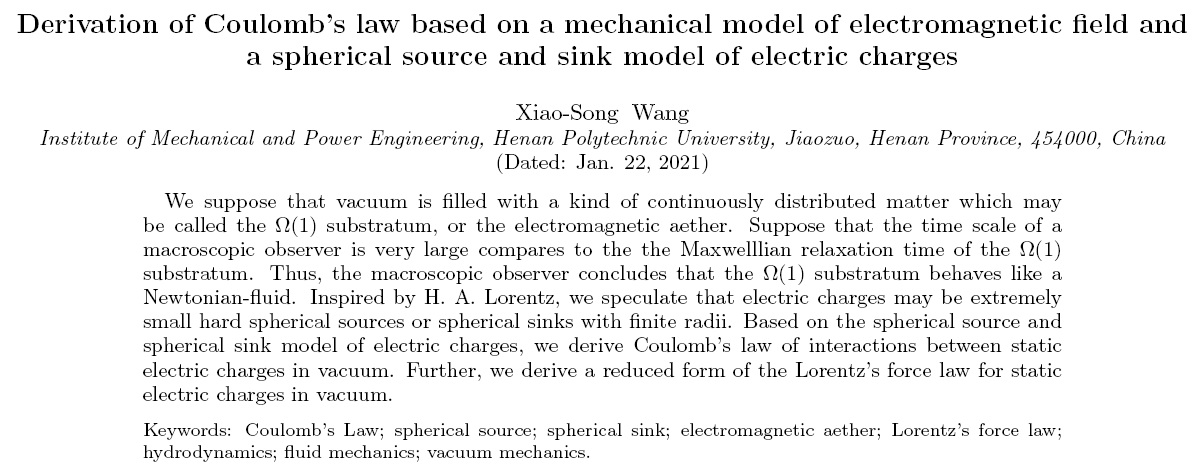We suppose that vacuum is filled with a kind of continuously distributed matter which may be called the $\Omega(1)$ substratum, or the electromagnetic aether. Suppose that the time scale of a macroscopic observer is very large compares to the the Maxwelllian relaxation time of the $\Omega(1)$ substratum. Thus, the macroscopic observer concludes that the $\Omega(1)$ substratum behaves like a Newtonian-fluid. Inspired by H. A. Lorentz, we speculate that electric charges may be extremely small hard spherical sources or spherical sinks with finite radii. Based on the spherical source and spherical sink model of electric charges, we derive Coulomb's law of interactions between static electric charges in vacuum. Further, we derive a reduced form of the Lorentz's force law for static electric charges in vacuum.

